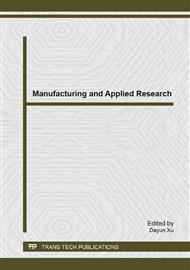p.77
p.83
p.88
p.91
p.95
p.100
p.107
p.112
p.117
Immobilization Efficiency Evaluation by Using Tessier, TCLP and SBET Method for As, Cu and Pb Contaminated Soils
Abstract:
In this paper, Tessier sequence extract procedure (SEP), toxicity leaching procedure (TCLP) and simple bioaccessibility extraction test (SBET) were employed to evaluate the immobile efficiencies for As, Cu and Pb contaminated soils. Experimental results indicated that the TCLP was efficient to extract the most active part heavy metal and evaluate the risk of the samples; the Tessier method divided heavy metals in soils to different fractions. Monitoring the changes of different fractions during the immobilizing procedure could help fully understand the mechanism of stabilization. The SBET method simulated the human digest system, thus it could be used to evaluate the risk changes to human during the immobilizing process; and to reveal the potential risk of chemical stability. In our project, these three evaluate method should be utilized properly to help accessing the risk, electing suitable immobilizing method and evaluating the efficiency of stabilization.
Info:
Periodical:
Pages:
95-99
Citation:
Online since:
March 2014
Authors:
Keywords:
Price:
Сopyright:
© 2014 Trans Tech Publications Ltd. All Rights Reserved
Share:
Citation:


